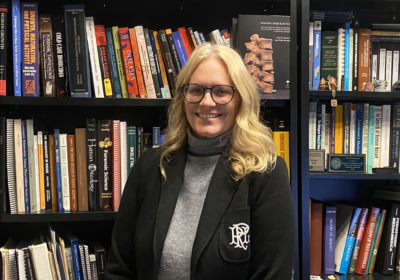Student play tackles country’s history of oppression
The U.S. has a rich and diverse history — a composition of different ethnicities, cultures and traditions. But it is a history marred with the blemishes of slavery and oppression. The play “The Road Weeps, the Well Runs Dry” seeks to synthesize this historical duality.
“The Road Weeps” takes place in Wewoka, Okla., a town founded in the latter part of the 1880s by Native Americans and blacks.
The rules of slavery are not officially in place, but the town does have a law that creates an emotional slavery — no weeping.
The story centers around the town’s water well going dry and the characters trying to figure out why. Some believe it’s an ethereal sign from God; others believe it was caused by a sinister being on Earth.
Along the way there is room for both individual and communal introspection. And in the end, the audience can glean an idea of how identities form, evolve and facilitate an environment of human symbiosis.
Fanni Green, a theater professor and director of the play, said the play combines storytelling and poetry to create a magical realism.
“There are elements of reality and elements of magic that invite the audience into a realm of disbelief,” she said. “It’s a place that invites the audience into disbelief, where people can fly.”
Green said directing the work came with a few “magnificent challenges” because it oscillates between the present, past and the future.
However, she said, the cultural significance of the play made the challenges worth it.
“This is a play that dramatizes a community trying to create and identify itself inside a time of our (American) history when both groups were enslaved and fought for their freedom,” Green said. “I think the social significance looks at a little-known part of history that looks at black Native Americans and it tells a slice of their story that is not included in our schools’ history books.”
The set is both aesthetically pleasing and functional. Most of the structures are made with varying shades of worn wood, embellished with authentic detail.
Most of the story occurs in the center of town where the well is. To the left is the town’s church and to the right is a convenience store owned by a woman believed to be a witch.
The cast is made up of USF students and professionals from across the country.
The actors show a great deal of acumen for their ability to play their ancestors and present selves, which makes the jumps between time seamless and believable.
Tiffany Schultz, a senior majoring in theater performance plays Mary South — a full-blooded Seminole.
Schultz said there are several major themes in the play. The ones that stood out to her were spirituality, homosexuality, community and mixing of races.
“It touches on so many things,” she said. “There’s no way you’re going to leave without something you connected with, which is why I really love it.”
Green said she considers herself an artist and an activist, and the narrative of the play coincides with her worldview.
These types of stories, she said, are the ones she goes in search of as a director and as a performer.
“This work gives us — the audience — an opportunity to explore and interrogate the choices that we make and have made as a collective community,” Green said. “I think we — America, our educational system — have to be committed to and bold enough to tell all our stories, not just the ones of triumph. We have to include all of the melting pot, of the truth even if it’s ugly.”
The runtime of the play is two and a half hours plus a 15-minute intermission. The play began Thursday and will continue until April 13. For dates and times, visit
theatreanddance.arts.usf.edu. A performance by a different local artist will be featured
30 minutes before each show.
Tickets cost $8 for students/seniors and $12 for general admission, when purchased in advance. On the days of the performances, tickets cost $10 for students/seniors and $15 for general admission.






